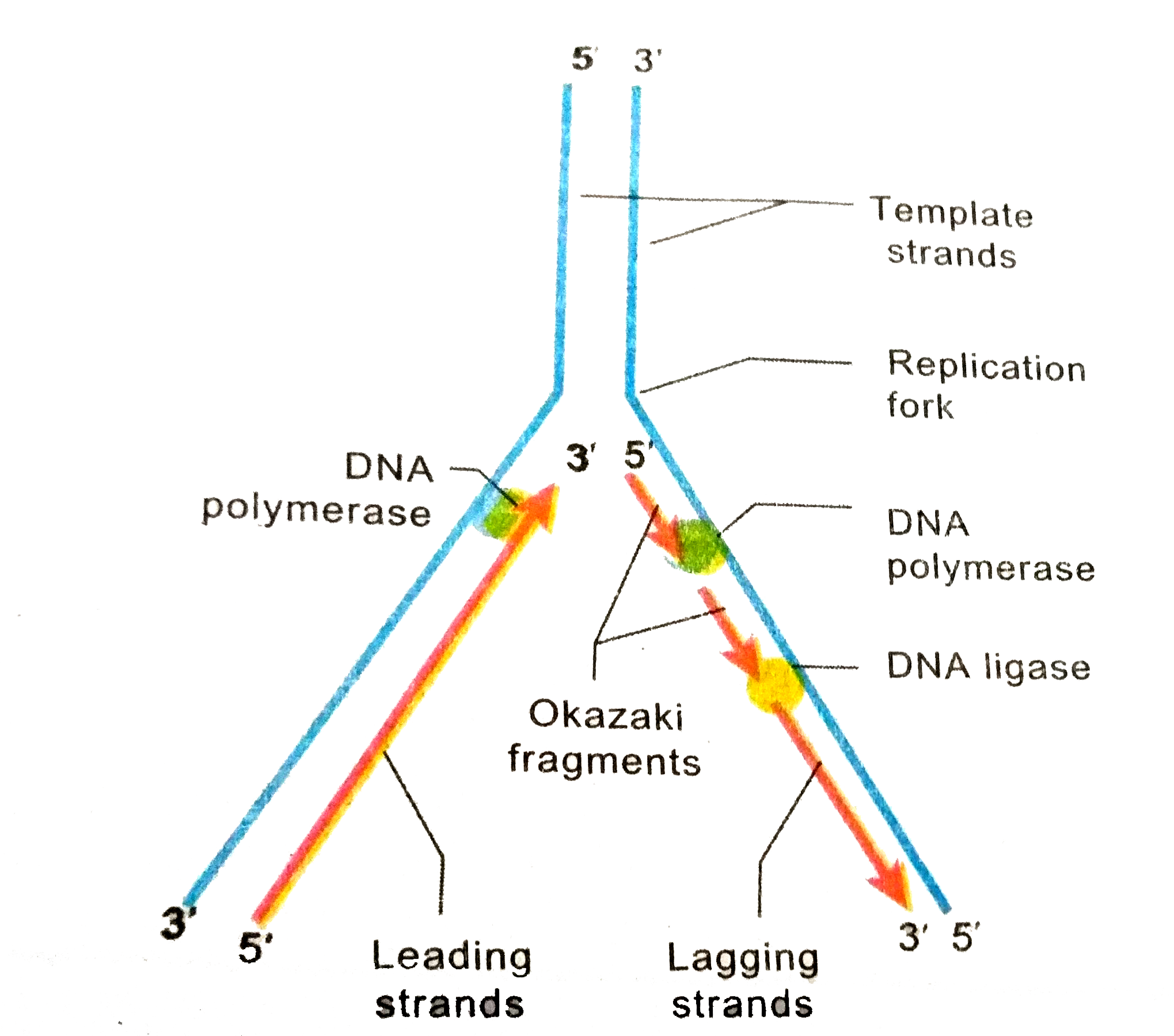Explain the process of DNA replication in eukaryotes.Solution in Tamil
Video Solution
Text Solution
(i) Replication begins at the initiation site called the site of .origin of replication. (ori). In Prokaryotes, there is only one origin of replication, whereas in eukaryotes with giant DNA molecules, there can be several origins of replication (replicons).
(ii) Replication occurs within a small opening of the DNA helix called as replication fork. Unwinding of the DNA strand is carried out by DNA helicase.
(iii) Thus, in one strand (template strand with polarity 3. → 5.) the replication is continuous and is known as the leading strand while in the other strand (coding strand with polarity 5. → 3.) replication is discontinuous, known as the lagging strand. The discontinuously synthesized fragments of the lagging strand (called the Okazaki fragments) are joined by the enzyme DNA ligase. 
(iv) As they move away in both directions, newly synthesized complementary nucleotides are paired with the existing nucleotides on the parent strand and covalently bonded together by DNA polymerase.
(v) Formation of new strand requires a primer (a short stretch of RNA) for initiation. The primer produces a 3. OH end on the sequence of ribonucleotides, to which deoxyribonucleotides are added. The RNA primer is ultimately removed by the exonuclease activity of DNA polymerase.
(vi) Finally, when all the nucleotides are in position, gaps are sealed by the enzyme DNA ligase.
(vii) At the point of origin of replication the helicases and topisomerases (DNA gyrase) unwind and pull apart the strands, forming a Y-Shaped structure called the replication fork.
(viii) The two strands of a DNA helix have an antiparallel arientation. The enzyme DNA polymerase can only catalyse the addition of a nucleotide to the new strands in the 5. → 3. direction, as it can only add nucleotides to the 3. carbon position.
|
Updated on:21/07/2023
Similar Questions
a) Explain the process of DNA replication with the help of a schematic diagram.
b) In which phase of the cell cycle does replication occur in Eukaryotes? What would happen if cell-division is not followed after DNA replication?05:58View Solutionयूकैरियोट्स में अर्धसंरक्षी DNA रेप्लीकेशन प्रक्रिया की अवधारणा किसने प्रतिपादित की
01:51View SolutionDNA replication in eukaryotic organisms is
02:44View SolutionDefine replication. Describe DNA replication in eukaryotic cell.
05:38View SolutionExplain the process of DNA replication.
11:04View SolutionDistinguish between Prokayotic DNA replication and Eukaryotic DNA replication.
06:16View SolutionExplain the process of DNA replication.
07:19View Solution

